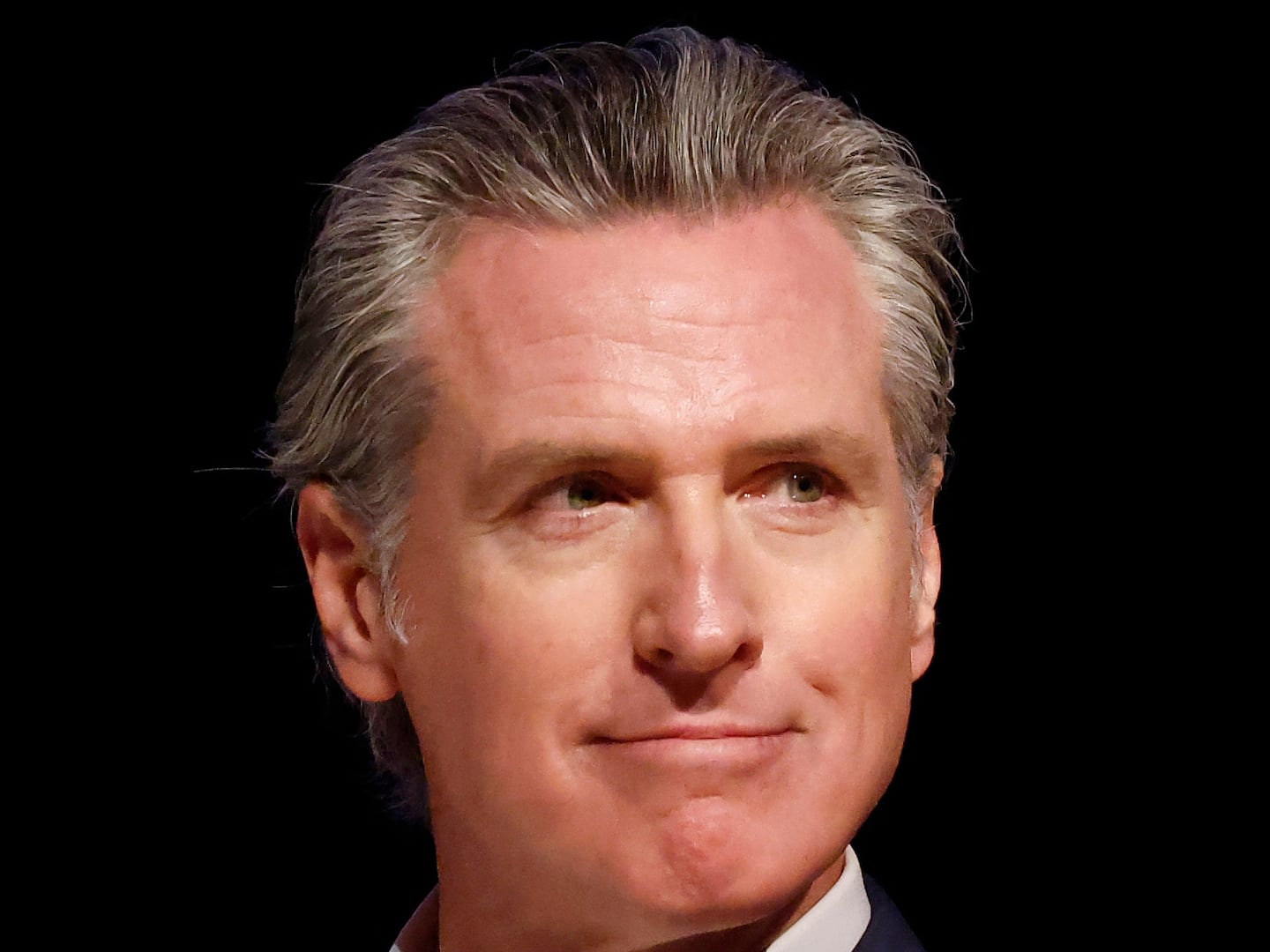Plotters in the deep state tried to shoot down Air Force One and foil President Trump’s North Korea summit. A cabal of global elites, including top figures in Hollywood, the Democratic Party, and the intelligence agencies, are responsible for nearly all the evil in the world. And now Trump is going to fix it all with thousands of sealed indictments, sending the likes of Hillary Clinton and Barack Obama straight to Guantanamo Bay.
Or at least that’s how the world is going for the believers of QAnon, the complex pro-Trump conspiracy theory that’s starting to having unpredictable effects in real life. The real news can be bad for Trump, but in QAnon-world, the president and his supporters really are getting sick of winning.
QAnon springs from a series of cryptic clues that started to be posted online in October 2017. Starting on 4Chan before migrating to the even more fringe 8Chan, the anonymous person behind the clues goes by “Q,” a reference to a high-level government security clearance. The “Anon” in “QAnon” refers to both Q himself, and to Q’s nameless supporters, the “anons.”
Q is supposed to be revealing this top-secret information via the clues, which QAnon fans have dubbed “breadcrumbs.” They’re written in a short bursts, in a reference-heavy style that’s part poem, part ransom note. Here’s one example from June:
<p>Think SC vote to confirm (coming).No Name action.Every dog has its day.Enjoy the show. Q</p>
“No Name” is Q’s nickname for John McCain, and “SC” is obviously the Supreme Court. As for “every dog has its day” — that’s the kind of cryptic Q remark that has spawned a cottage industry of PDFs and 24/7 livestreams analyzing the crumbs.
Since Q could be anyone with internet access and a working knowledge of conspiracy theories, there’s no reason to think that Q is a member of the Trump administration rather than, say, a troll or YouTube huckster. But incredibly, lots of people believe it.
In April, hundreds of QAnon believers staged a march in downtown Washington, D.C. with a vague demand for “transparency” from the Justice Department. “Q” shirts have become frequent sites at Trump rallies, with one QAnon believer scoring VIP access. In June, an armed man in an homemade armored truck shut down a highway near the Hoover Dam and held up signs referencing QAnon. And celebrities like comedian Roseanne Barr and former Red Sox pitcher Curt Schilling have signed on.
QAnon is unusual, according to University of Miami professor Joseph Uscinski, because it offers Republicans an alternate view of the world when they already control nearly the entire government. Usually, “conspiracy theories are for losers,” Uscinski said,
“Normally you don’t expect the winning party to use them, except when they’re in trouble,” Uscinski said.
Since Q’s “breadcrumbs” are so vague, it’s impossible to nail down exactly what the storyline is supposed to be. But the general story, outlined in a pro-QAnon video endorsed by Schilling, is that every president before Trump was a “criminal president” in league with all the nefarious groups of conspiracy theories past: the global banking elite, death squads operating on orders from Hillary Clinton, deep-state intelligence operatives, and Pizzagate-style pedophile rings. In an effort to break this cabal’s grip, according to Q, the military convinced Trump to run for president.
Now Trump and his allies in the military are poised to arrest all these wrongdoers, shipping many of them off to Guantanamo Bay. That coming purge has been dubbed “The Storm” by QAnon fans, who claim Trump referenced it when he referenced “the calm before the storm” in October.
While the Storm is at the center of the QAnon narrative, it’s also flexible enough to fold in just anything that makes the news. Q is fond of hinting that each mass shooting is a false-flag attack organized by the cabal, and he used a blurry webcam picture of a flash of light near the Puget Sound to claim that the deep state had tried to shoot down Trump’s plane.
QAnon fans are obsessed with finding proof that whoever is behind Q is actually connected to the Trump administration. During one Trump trip to Asia, Q posted some pictures of islands, which supporters seized on as proof that Q was on Air Force One. Q is also fond of predicting Trump tweets that, in retrospect, don’t exactly require top-secret clearance — that Trump will tweet “Saturday” on Small Business Saturday, or “Juneteenth” on June 19th.
Fans also point to Trump using phrases “predicted” by Q as proof of the story’s legitimacy. After one supporter requested that Trump used the phrase “tip top” in the State of the Union Address, While Trump never said “tip top” in that speech, QAnon supporters felt vindicated three months later when Trump said it instead at the White House Easter Egg Roll. QAnon supporters have even claimed Trump uses his hands to make a “Q” sign as a signal to them.
QAnon supporters love to speculate about Q’s identity, predicting that it’s either a highly placed White House staffer or even Trump himself. Other, more mundane theories about Q’s identity abound, but there’s not much compelling evidence pointing in any direction.
Even when Q’s predictions disappoint, the QAnon community keeps going. Q hyped up the release of the Justice Department’s inspector general report on the FBI’s Hillary Clinton email investigation, for example, promising that it would contain the promised “Storm” of revelations about top Democrats and the deep state. When the report fizzled, however, Q promised that Deputy Attorney General Rod Rosenstein, a frequent target of QAnon jabs, had tampered with the report. Trump had the real report, Q claimed, and that report’s release would solve everything.
While QAnon has been the breakout conspiracy theory of the Trump era, not everyone on the right is on board. The farcical nature of QAnon’s clues has tended to alienate many younger, more internet-savvy people on the right, including members of the alt-right. QAnon also alienated a swathe of the right-wing conspiracy theory internet after Q denounced other internet personalities who had been speculating about the clues, accusing them of trying to profit off the movement. But QAnon has been a hit with older Trump supporters, leading to tech-illiterate baby boomers looking to spread the QAnon gospel asking for help in internet forums on “how to meme.”
Nine months after it started, QAnon world has accumulated an internal language of its own. The moderators of the QAnon forums and the interpreters of the clues call themselves “bakers,” a reference to the “breadcrumbs.” QAnon followers are fixated on which public officials are “white hats” or “black hats,” meaning whether they’re really working for Trump or are agents of the cabal. They urge one another to “follow the white rabbit,” which made Trump delivering his “tip top” speech next to the Easter Bunny all the more portentous.
QAnon believers even have a slogan, “Where we go one, we go all,” which they often abbreviate to “WWG1WGA.” It’s become a rallying cry for QAnon fans that Q has attributed to President John F. Kennedy, although it actually appears to come from the 1996 action movie White Squall.
That community of people deciphering the clues seems to be as important to QAnon believers as Q’s message itself. On QAnon forums, believers talk about the idea that the cabal they believe is responsible for most of the trouble in the United States will soon be swept away has given them hope. Despite obviously being fake, then, it doesn’t look like QAnon is going to go away anytime soon.






